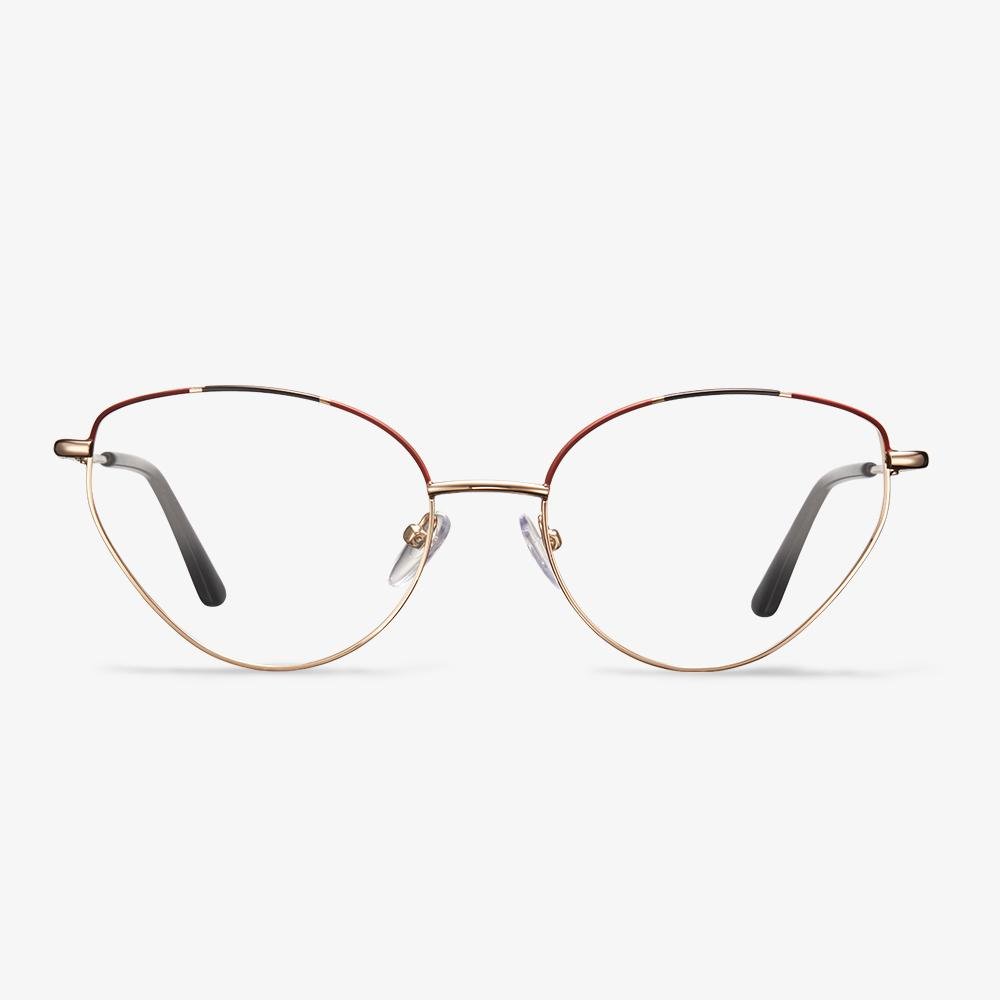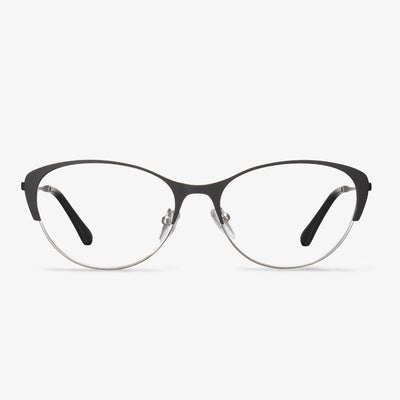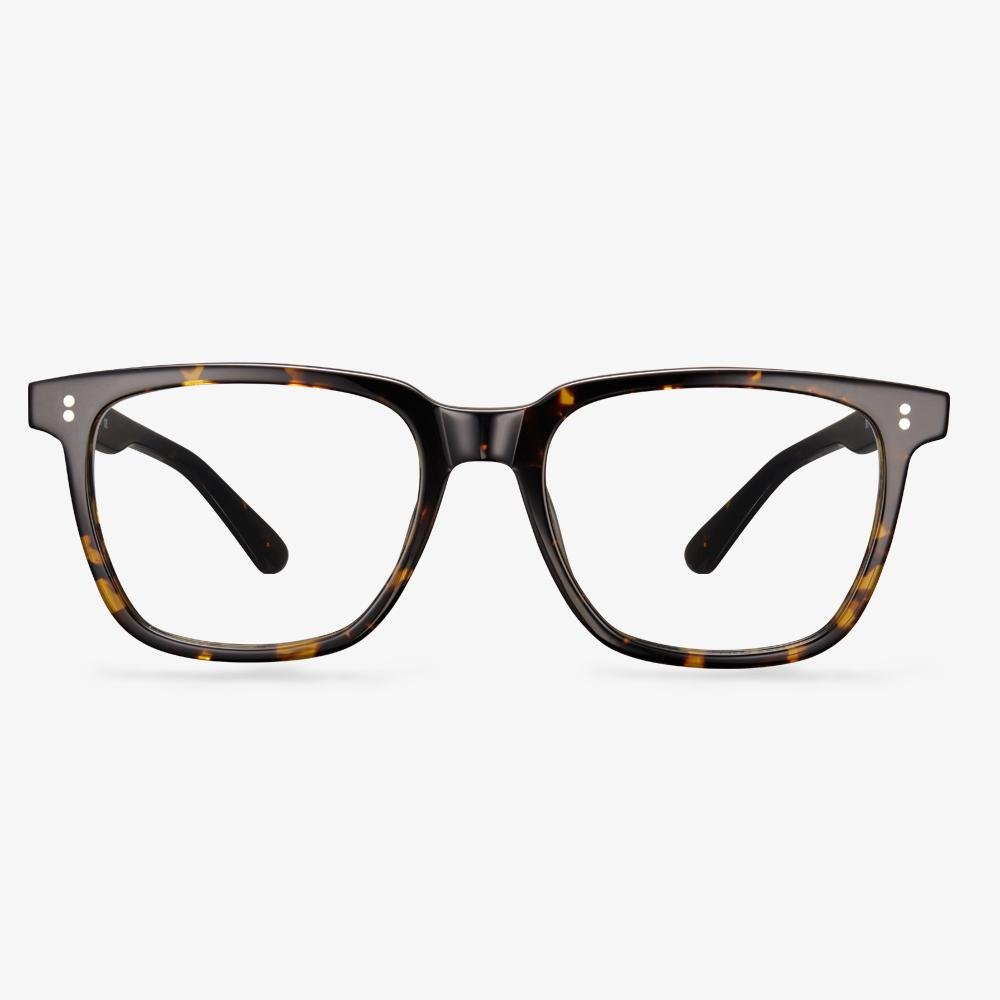What Are the Advantages of High-Index Lenses?
In this section, we will show you the advantages of high-index lenses.
- Thanks to the slim shape and narrow edges, high index lenses offer wearers the flexibility to choose from a wide array of fashion-forward frames. Their size means that they can be easily paired with sleek metal frames or incorporated into rimless eyewear for an attractive barely-there look.
- High index lenses are more comfortable for extended use because they are lighter than the traditional counterparts.
- High index lenses are available with many of the same options as traditional lenses. For example, they can be either single-vision or progressive.
- For users with strong prescriptions, high index lenses mean no bulky, bottle-glasses appearance. This can reduce the unwanted bug-eye look traditionally associated with very thick lenses.
However, there are some negative voices of high index lenses.
How to Wear Cat Eye Glasses?
Since the cat eye frame glasses are so popular, you may ask whether I can wear the cat eye glasses. Usually, cat eye glasses can suit a variety of face shapes. But faces with more angular or prominent features would look best in a round or oval shaped pair of cat eye glasses because these cat eye frame glasses will balance wide jawlines of square or triangle faces, while the rounded lens will soften sharp features.
However, the round face will look best in frames which are with bold and angular lines. These striking details will help to sharpen soft facial features and rounded jawlines. You can click here to know more knowledge of the face shape and how to choose the glasses frames.
Transition Lenses Problems
It is not convenient to rely on photochromic lenses when driving. It also may be unsafe if the driver depends on the prescription to see or is legally bound to wear prescription lenses when driving.
Besides, transition lenses are typically the size and shape of regular vision-correction lenses, which allows them to accurately correct the field of vision, but does not account for peripheral areas on either side of the visible range. Sunglasses operate by maintaining very dark glasses that expand over the field of vision and the peripheral with large, oblong lenses that block sunlight from both the front and sides. However, transition lenses are not typically dark enough for heavy sun and cannot block light penetration on the peripheral, leading to people having to resort to sunglasses again.
Of course, there are some benefits of transition lenses and you can click here to learn more.
The origin of aspheric lens
The Visby glasses, unearthed in Gotland, Sweden, are the earliest aspheric lens found. The Vikings in the 11th century used it as a magnifying glass, and some of the best ones were made of silver, making them look like handicrafts. In 1667, Francis Smethwick grinds the first high-quality aspheric lenses and presents them to the Royal Society. That's a telescope with three aspheric elements. In 1956, Elgeet, which originally designed and manufactured optical instruments for the U.S. Navy, produced the world's first mass-produced aspheric lens for photography (Golden Navitar 12mm F1.2) for a 16mm film machine. Today, aspheric lenses are found in everything from tall telescopes to missile guidance systems to camera lenses. In the glasses we wear, the aspheric lens is familiar to consumers.
Tom Barrett Optical
The progressive eyeglasses meet your fashion desires and your visual needs. They provide unique framing styles and professions to deliver the highest quality eyewear. They understand the needs of customers to bring fashion and functionality to everyone. For more than 35 years, they have provided stylish eyewear with wonderful service and quality. If the concept of eyewear continues to change, the product quality and service will continue to grow and update.
What Is Anti Reflective Coating?
Anti reflective coating, also known as AR, anti-glare, no-glare, or glare-free coating, can provide benefits to your vision. Anti reflective coating is added to lenses to reduce glare caused by light hitting the back of the lenses to improve your vision and make your eyeglasses more visually attractive.
Anti reflective coating will eliminate all reflections from the front and back surfaces of your lenses. Hence, more light is able to pass through your lenses which improves your vision. At the same time, fewer distractions are visible and the lenses are hardly noticeable, especially in the dark. So, is anti glare worth it? Most people agree that.
How To Use Contact Lens Correctly?
A periodic review is necessary. In the process of wearing contact lenses, the eyes may change due to the existence of contact lenses. At the same time, in the process of wearing contact lenses, the lens may be polluted, damaged, and have other changes. This is to check regularly to prevent damage to the eyes. Usually, the recommended review period is one week, one month, three months, half a year, and once every half a year after wearing it.


















































